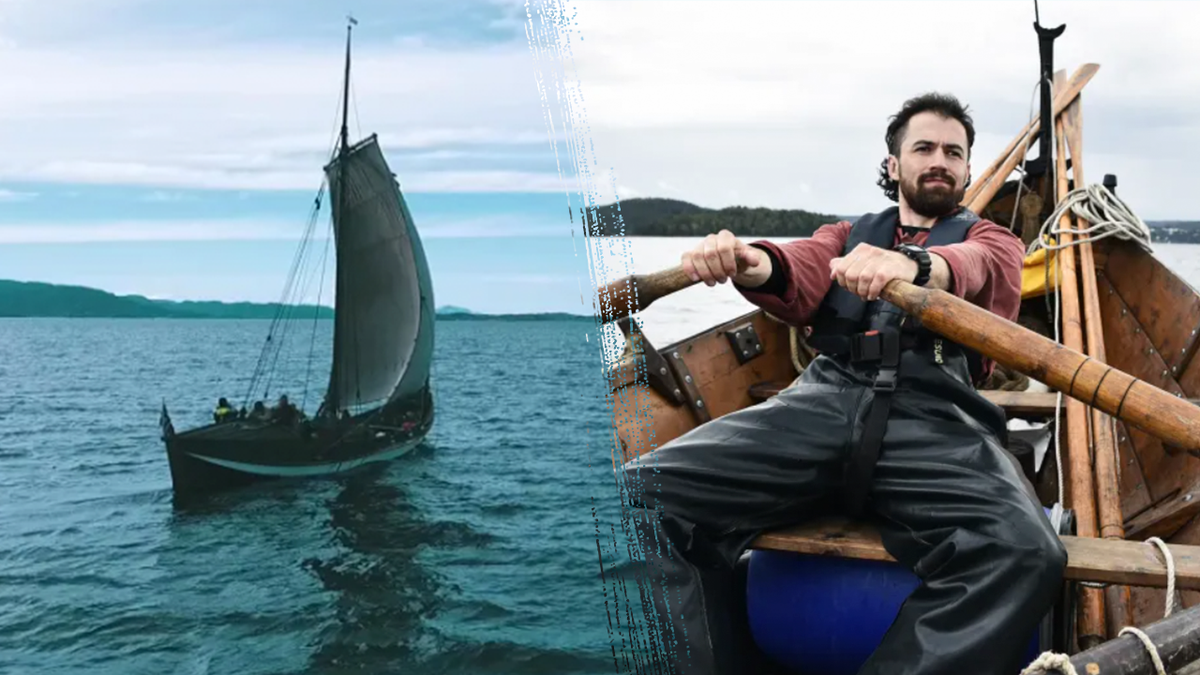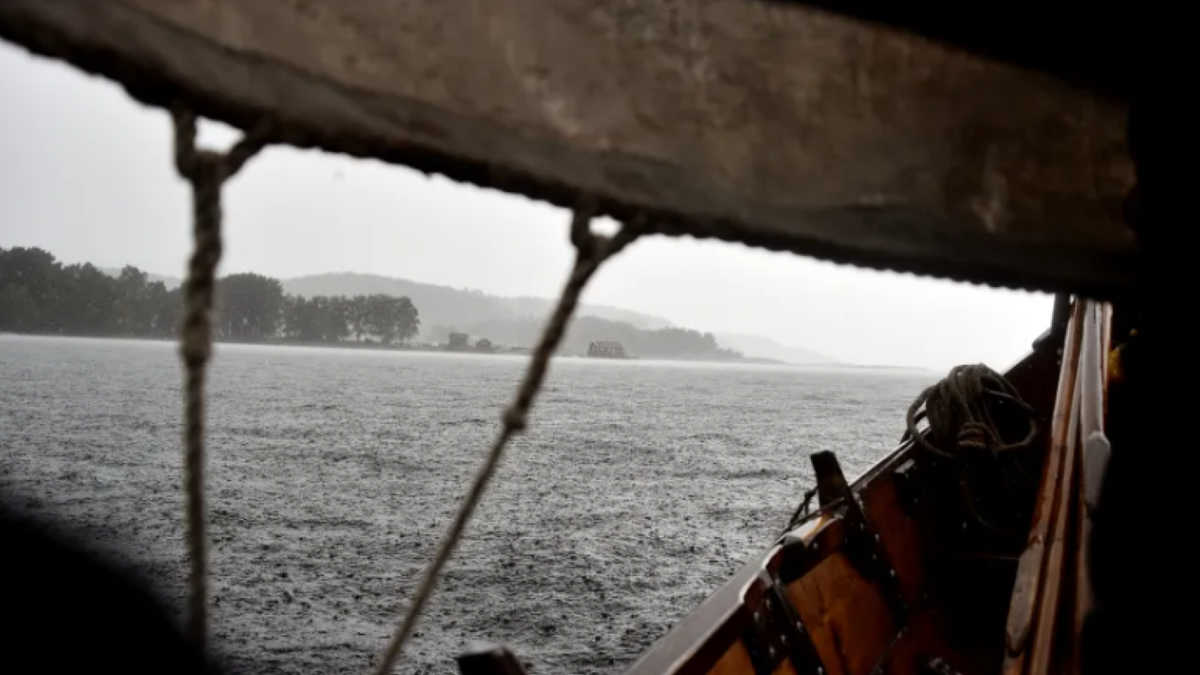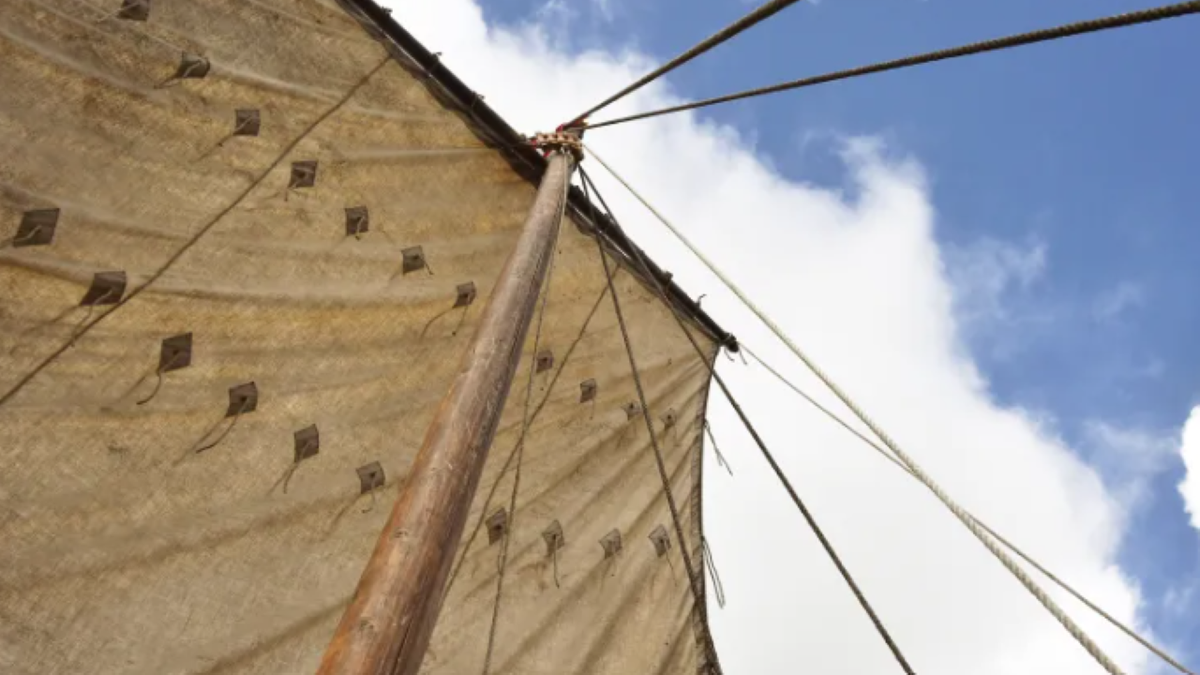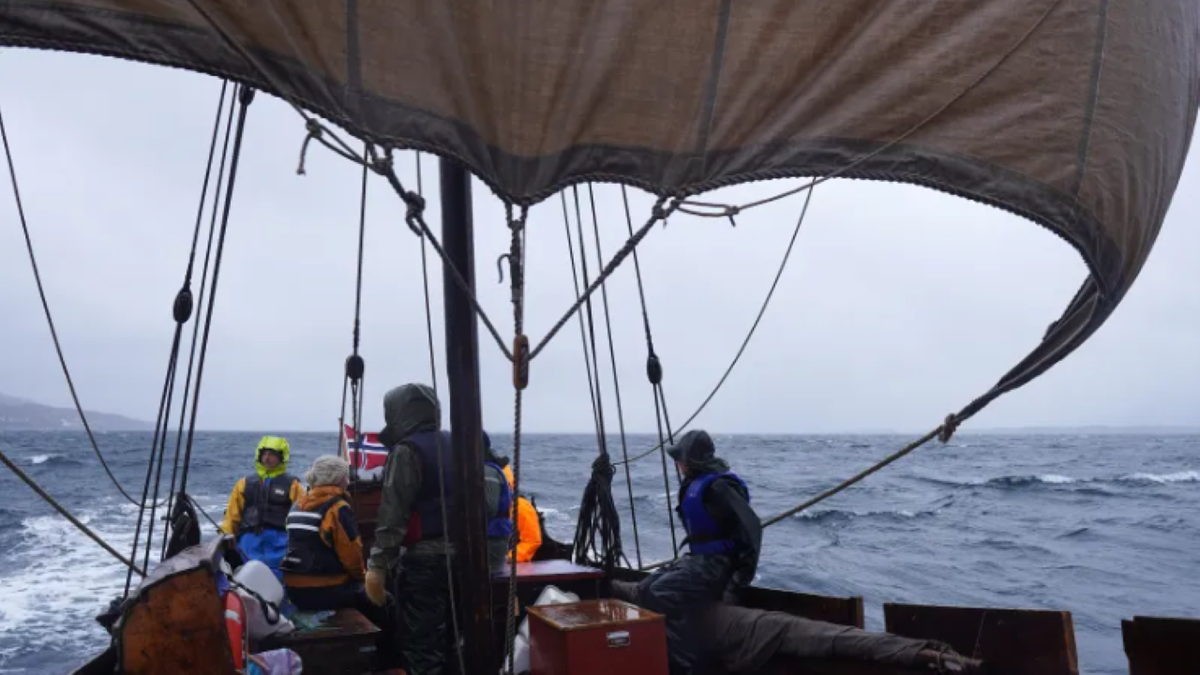NEWYou can now listen to Fox News articles!
A graduate student in Sweden has been learning about Vikings through an unusual method: He’s done it by sailing like one.
Archaeologist Greer Jarrett, a doctoral student at Lund University, has navigated over 3,000 miles along historical Viking trade routes in the Arctic Ocean.
With the help of his team, the academic has sailed the seas with a reconstructed sailing boat that would have been used by Vikings 1,200 years ago.
METAL DETECTORISTS STUMBLE ACROSS 1200-YEAR-OLD TREASURE, UNUSUAL CHRISTIAN ARTIFACT IN VIKING GRAVES
So what has his research uncovered so far? Among other things, Jarrett has identified four possible Viking harbors along the coast of Norway.
Jarrett’s research suggests that Vikings ventured farther from Scandinavia than previously thought and used decentralized port networks during their journeys, according to a press release published by Lund University.

Swedish archaeologist Greer Jarrett embarked on a three-year, 3,100-mile expedition in a replica Viking boat to learn more about Nordic history. (Benjamin Vilella / Lund University)
“In his latest study, he has found evidence of a decentralized network of ports, located on islands and peninsulas, which probably played a central role in trade and travel in the Viking era,” the statement added.
Due to the type of boats Vikings used, Jarrett said that they likely used small, easily accessible harbors quite often.
HAUNTING SLAVE SHIPS FOUND OFF COAST OF NATIONAL PARK 300 YEARS LATER: ‘VERY CONVINCING’
“With this type of boat, it has to be easy to get in and out of the harbor in all possible wind conditions. There must be several routes in and out.”
The archaeologist also noted that, while Viking historians know where trade journeys generally started and ended, knowledge about the more informal stops is scant.

Greer Jarrett’s research on Viking trade routes uncovered four potential harbors, among other discoveries. (Catrin Jakobsson / Lund University)
Jarrett said his research is focused on “what happened on the journeys between these major trading centers.”
“My hypothesis is that this decentralized network of ports, located on small islands and peninsulas, was central to making trade efficient during the Viking Age,” he explained.
“Our hands really suffered. At that point, I realized just how crucial it is to have a good crew.”
He also ran into a few challenges during his three-year journey.
In one instance, while 15 miles out to sea, the boat’s mast spar broke and sent the mainsail toppling down.
“We had to lash two oars together to hold the sail, and hope that it would hold,” the student recalled. “We made it back to the harbor safely, but then we had to spend several days repairing the boat before we could sail again.”

Jarrett found that the primitive Viking boat was still stable without a deep keel. (Catrin Jakobsson / Lund University)
“On another trip, a minke whale suddenly surfaced and flapped its huge tail fin just meters from the boat.”
For more Lifestyle articles, visit foxnews.com/lifestyle
Underwater currents and downslope winds also made it difficult for him to navigate near land. Jarrett needed to develop “mental maps” to figure out where to go, as the Vikings did.
But he was also pleasantly surprised by other aspects of the journey. Jarrett found that the primitive boats are stable, even without a deep keel, the release indicated.
He was also pleasantly surprised by other aspects of the journey.
The archaeologist also learned how important relationships were during these voyages, where Vikings had to rely on one another to sail and survive.
CLICK HERE TO SIGN UP FOR OUR LIFESTYLE NEWSLETTER
“You need a boat that can withstand all kinds of weather conditions,” he said. “But if you don’t have a crew that can cooperate and put up with each other for long periods, these journeys would probably be impossible.”
“The cold in [Norway’s] Lofoten Islands was a challenge,” Jarrett said. “Our hands really suffered. At that point, I realized just how crucial it is to have a good crew.”

Jarrett stressed the importance of crew cooperation while operating the boat. (Lund University)
The Viking Era lasted from roughly 800 A.D. to 1050 A.D.
Remnants of the period are still being found across Europe.
CLICK HERE TO GET THE FOX NEWS APP
Last year, two curious metal detectorists found a 1,000-year-old Viking “wallet.”
More recently, Swedish archaeologists announced the discovery of an “unusual” Viking-era coffin in April.








